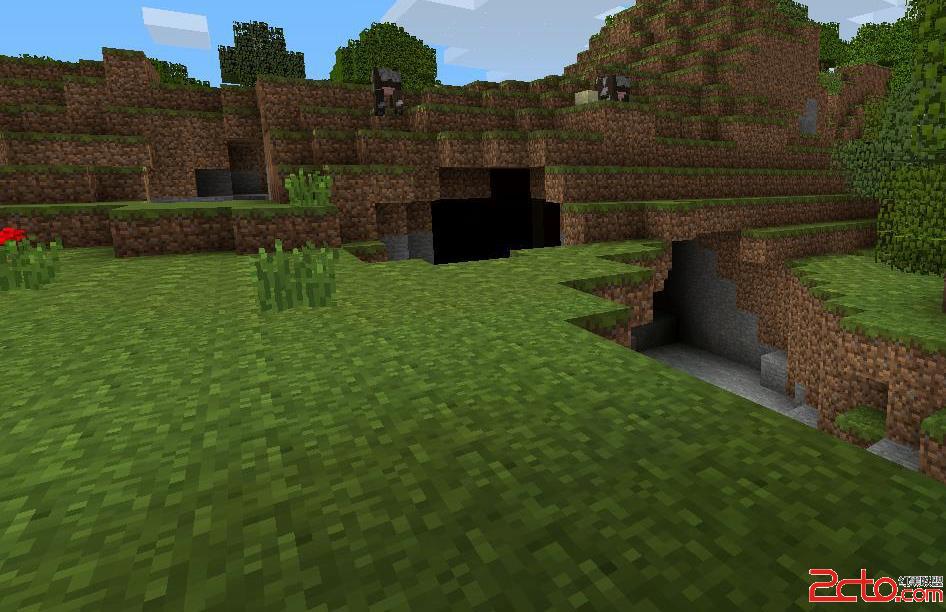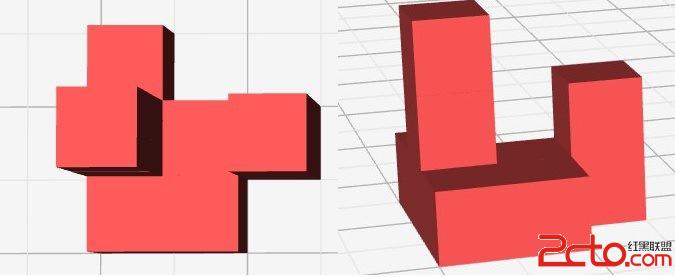hdu 5538 House Building(長春現場賽——水題)
House Building
Problem Description
Have you ever played the video game Minecraft? This game has been one of the world's most popular game in recent years. The world of Minecraft is made up of lots of
1×1×1blocks in a 3D map. Blocks are the basic units of structure in Minecraft, there are many types of blocks. A block can either be a clay, dirt, water, wood, air, ... or even a building material such as brick or concrete in this game.
 Figure 1: A typical world in Minecraft.
Figure 1: A typical world in Minecraft.
Nyanko-san is one of the diehard fans of the game, what he loves most is to build monumental houses in the world of the game. One day, he found a flat ground in some place. Yes, a super flat ground without any roughness, it's really a lovely place to build houses on it. Nyanko-san decided to build on a
n×mbig flat ground, so he drew a blueprint of his house, and found some building materials to build.
While everything seems goes smoothly, something wrong happened. Nyanko-san found out he had forgotten to prepare glass elements, which is a important element to decorate his house. Now Nyanko-san gives you his blueprint of house and asking for your help. Your job is quite easy, collecting a sufficient number of the glass unit for building his house. But first, you have to calculate how many units of glass should be collected.
There are
nrows and
mcolumns on the ground, an intersection of a row and a column is a
1×1square,and a square is a valid place for players to put blocks on. And to simplify this problem, Nynako-san's blueprint can be represented as an integer array
ci,j(1≤i≤n,1≤j≤m). Which
ci,jindicates the height of his house on the square of
i-th row and
j-th column. The number of glass unit that you need to collect is equal to the surface area of Nyanko-san's house(exclude the face adjacent to the ground).
Input
The first line contains an integer
Tindicating the total number of test cases.
First line of each test case is a line with two integers
n,m.
The
nlines that follow describe the array of Nyanko-san's blueprint, the
i-th of these lines has
mintegers
ci,1,ci,2,...,ci,m, separated by a single space.
1≤T≤50
1≤n,m≤50
0≤ci,j≤1000
Output
For each test case, please output the number of glass units you need to collect to meet Nyanko-san's requirement in one line.
Sample Input
2 3 3 1 0 0 3 1 2 1 1 0 3 3 1 0 1 0 0 0 1 0 1
Sample Output
30 20
 Figure 2: A top view and side view image for sample test case 1.
Figure 2: A top view and side view image for sample test case 1.
Source
題目大意:給你積木圖的俯視圖,(i,j)位置放了一個高度為a[i][j]的積木,求表面積(不算下表面)。
解題思路:從上下左右四個方向掃一下相鄰兩個積木的高度差就可以了。
代碼:
#include
#include
#include
using namespace std;
int main()
{
int t,n,m,k,ans;
int a[110][110];
scanf("%d",&t);
while (t--)
{
memset(a,0,sizeof(a));
scanf("%d%d",&n,&m);
k=0;
for (int i=1;i<=n;i++)
{
for (int j=1;j<=m;j++)
{
scanf("%d",&a[i][j]);
if (a[i][j]>0)
k++;
}
}
for (int i=1;i<=n;i++)
{
for (int j=1;j<=m;j++)
{
ans=a[i][j]-a[i][j+1];
if (ans>0)
k+=ans;
}
}
for (int i=1;i<=n;i++)
{
for (int j=1;j<=m;j++)
{
ans=a[i][j]-a[i][j-1];
if (ans>0)
k+=ans;
}
}
for (int i=1;i<=n;i++)
{
for (int j=1;j<=m;j++)
{
ans=a[i][j]-a[i-1][j];
if (ans>0)
k+=ans;
}
}
for (int i=1;i<=n;i++)
{
for (int j=1;j<=m;j++)
{
ans=a[i][j]-a[i+1][j];
if (ans>0)
k+=ans;
}
}
printf ("%d\n",k);
}
return 0;
}
#include <IOSTREAM>
#include <CSTDIO>
#include <CSTRING>
using namespace std;
int main()
{
int t,n,m,k,ans;
int a[110][110];
scanf("%d",&t);
while (t--)
{
memset(a,0,sizeof(a));
scanf("%d%d",&n,&m);
k=0;
for (int i=1;i<=n;i++)
{
for (int j=1;j<=m;j++)
{
scanf("%d",&a[i][j]);
if (a[i][j]>0)
k++;
}
}
for (int i=1;i<=n;i++)
{
for (int j=1;j<=m;j++)
{
ans=a[i][j]-a[i][j+1];
if (ans>0)
k+=ans;
}
}
for (int i=1;i<=n;i++)
{
for (int j=1;j<=m;j++)
{
ans=a[i][j]-a[i][j-1];
if (ans>0)
k+=ans;
}
}
for (int i=1;i<=n;i++)
{
for (int j=1;j<=m;j++)
{
ans=a[i][j]-a[i-1][j];
if (ans>0)
k+=ans;
}
}
for (int i=1;i<=n;i++)
{
for (int j=1;j<=m;j++)
{
ans=a[i][j]-a[i+1][j];
if (ans>0)
k+=ans;
}
}
printf ("%d\n",k);
}
return 0;
}</CSTRING></CSTDIO></IOSTREAM>

